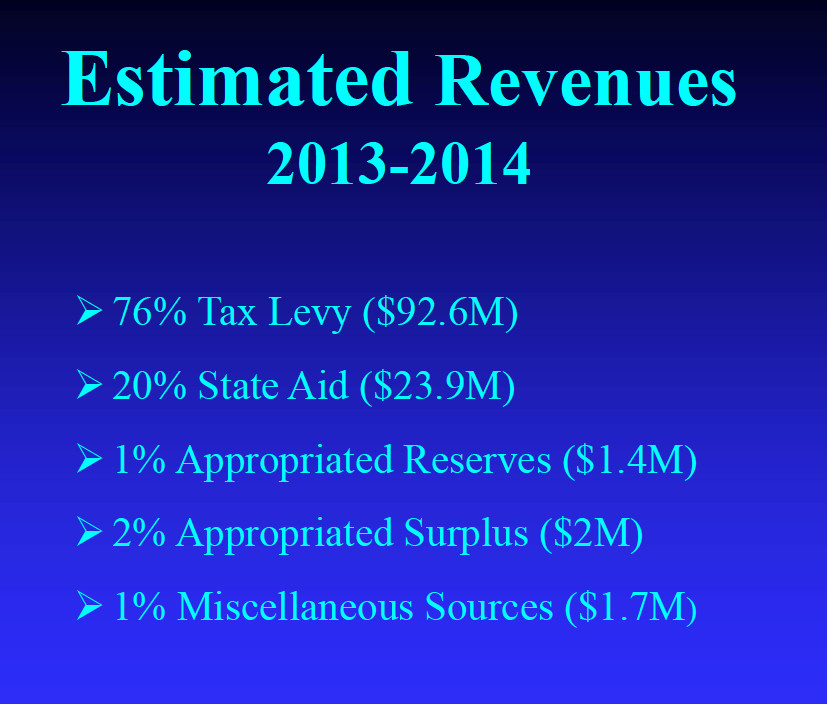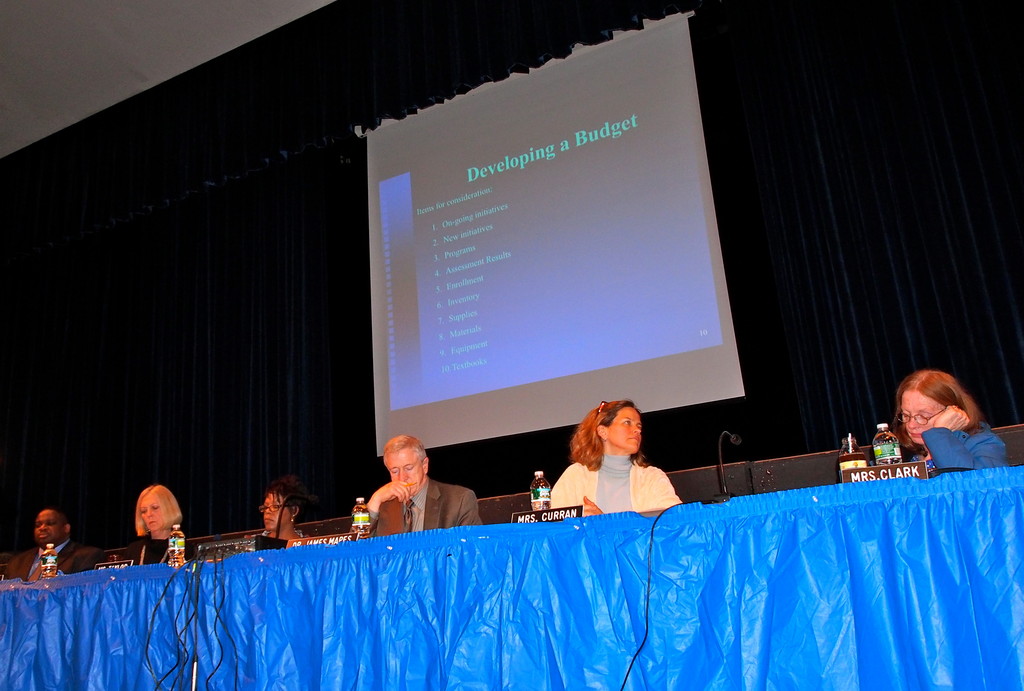Building a budget, part one
Initial work session explores administrative and capital expenses
A fast-paced Board of Education budget work
session, held last week in the Baldwin High School auditorium, explored the first third of a proposed 2013-14 spending plan for Baldwin schools. Narrated by Ed Cullen, assistant superintendent for business, the presentation encompassed 23 percent of the total proposed budget, and covered administrative and capital expenses, which account for 10 and 13 percent of expenditures, respectively.
Cullen attempted to shed some light on the state comptroller’s opaque budget code system, which includes four-digit function codes, three-digit object codes, two-digit location codes and four-digit
program codes. He explained, for example, that code 1910 referred to the district’s insurance expenses. He also clarified that administrative costs encompass district staff and other internal expenses like auditing, the treasurer’s office, human resources and the district’s school association dues.
Cullen said that the capital portion of the budget was largely physical in nature,
consisting of buildings and grounds maintenance, custodial upkeep and security, among other things.
He did not dwell on the district’s financial woes. (It will seek to exceed its 3.14 percent tax levy cap in order to bridge a budget gap of around $6 million.) He briefly explained the sources of the district’s expected income in 2013-14, and how much it expects to receive from each (see chart, right). Then he plunged into the details of each budget category, and why spending was increasing or decreasing.
Administrative gains and losses
Cullen said that the total administrative budget for 2013-14 would be just under $11.8 million, an increase of almost $235,000 over the current spending plan. The biggest spending hikes in this portion of the budget would include an additional $100,000 for “unallocated insurance” — which Cullen attributed to a predicted uptick in rates
following Hurricane Sandy — and more than $250,000 to cover swelling retirement benefits for district staff. He identified retirement and health care as two of the most significant expenses the district must cover.













